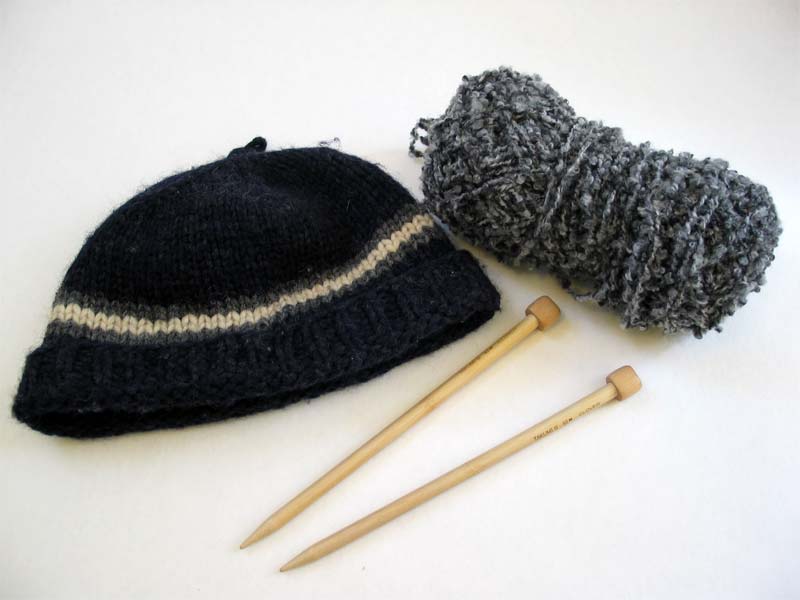
Knitting is a perfect pastime to get under your crafty belt! While it may seem old fashioned, knitting is having a huge resurgence at the moment, in part because a lot of new knitters picked it up in the 2020 lockdown and never put it down!
Due to this resurgence, it’s easy to find fun and exciting projects that are chic and on-trend, as well as classic pieces and quirky accessories. You can find knitters showing off their newest creations, as well as great tutorials and hacks all over social media with the following hash tags:
If you’re an absolute beginner, it’s best to start with an easy scarf to get used to the techniques, tensioning the yarn, and finishing a project. Many people recommend starting with a chunky yarn and big needles, as the knitting comes together quite quickly, but chunky yarn can be quite cumbersome and the larger needles can cause mild hand strain if you are not used to it.
So where do you get started?

Kits
A great place to start is with a knitting kit. These usually come with everything you need to make the end project, including the yarn, needles, and notions (buttons and trims). Thankfully, most kits are rated by difficulty, so whether you are a compete beginner or you’ve knitted before there’s a kit for everyone! We Are Knitters and Wool and the Gang make popular kits which are categorised by experience level, perfect for your first big project!

Online Tutorials and Books
Firstly – watch a video on the differences between English and Continental knitting. These are two different ways of holding the yarn that get the same result. Most people have a preferred way of knitting, so try each one out and see which feels most natural to you.
When you’re getting started it is essential to learn to cast on. There are a few different methods you might want to try. For beginners, the thumb method is the easiest way. Once you build your experience and want to knit garments, the long tail method is an easy technique to learn that adds stretch to your casting on so you can get the project over your head or body!
The knit stitch is the most useful stitch to learn first. You can easily knit a whole scarf or blanket in this one stitch, which is called garter stitch.
Once you’ve got the knit stitch down, move on to the purl stitch. The easiest way to think of purling is to think that you’re essentially creating the knit stitch backwards. This means that when you’ve knit alternative rows of knit and purl you will have a ‘smooth side’ and a ‘bumpy side’ – like a traditional knitted jumper. Doing rows of Knit 1 Purl 1 (K1P1) will also create a rib stitch, like you find at the hem or cuff of a jumper.
To finish your project you will need to learn to cast off. This is an easy finish that means all the stitches on your needles are finished off and won’t unwind.
When you’re getting started, we’d recommend you start with some inexpensive yarn and sturdy bamboo needles, and make some squares to practise casting on, garter stitch, stockinette stitch, rib stitch, and casting off. If you’re not keen to waste yarn (or time) knit these sample squares in a smooth cotton or bamboo yarn to make reusable make up remover pads.

Classes
Most local yarn stores have knitting classes or clubs. A class will be the best way to learn if you are a hands-on learner, and will usually be in a group format with an experienced instructor, so you can make some knitting friends at the same time. Attending a knitting club is usually a more social environment, and I wouldn’t expect there to be a teacher present. However a club is a great way to meet with others who have a wide range of experiences, so if you’re stuck with a technique or understanding pattern instructions someone will usually be willing and able to help.

Other Resources: Ravelry
Ravelry is a social networking site for knitters. There are great forums where you can ask questions and get great answers from experienced and kind knitters. They also have an excellent databasing system where you can track your growing yarn stash, store project ideas for later, and find new patterns once you build up your confidence.
